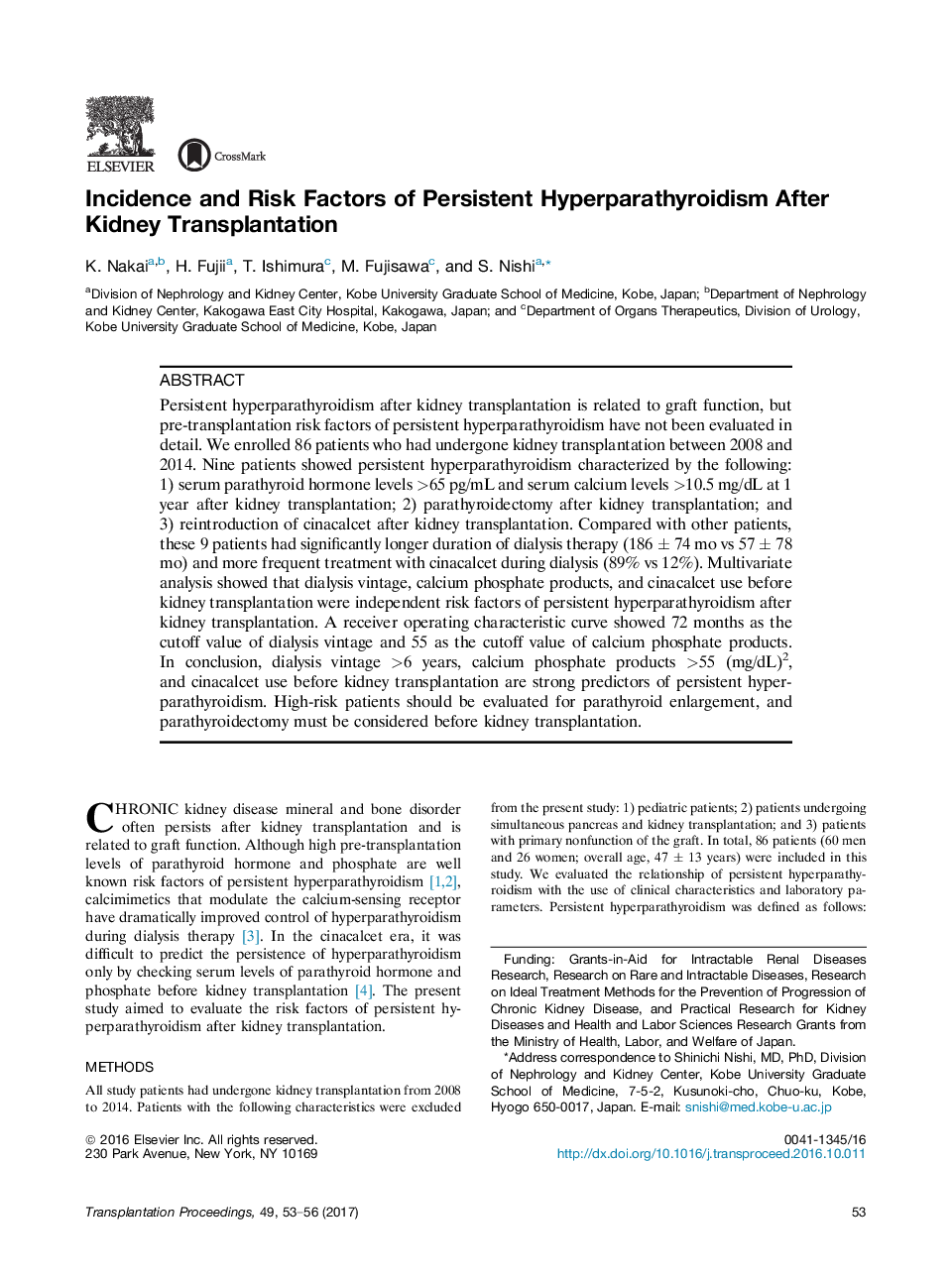| Article ID | Journal | Published Year | Pages | File Type |
|---|---|---|---|---|
| 5729287 | Transplantation Proceedings | 2017 | 4 Pages |
Persistent hyperparathyroidism after kidney transplantation is related to graft function, but pre-transplantation risk factors of persistent hyperparathyroidism have not been evaluated in detail. We enrolled 86 patients who had undergone kidney transplantation between 2008 and 2014. Nine patients showed persistent hyperparathyroidism characterized by the following: 1) serum parathyroid hormone levels >65 pg/mL and serum calcium levels >10.5 mg/dL at 1 year after kidney transplantation; 2) parathyroidectomy after kidney transplantation; and 3) reintroduction of cinacalcet after kidney transplantation. Compared with other patients, these 9 patients had significantly longer duration of dialysis therapy (186 ± 74 mo vs 57 ± 78 mo) and more frequent treatment with cinacalcet during dialysis (89% vs 12%). Multivariate analysis showed that dialysis vintage, calcium phosphate products, and cinacalcet use before kidney transplantation were independent risk factors of persistent hyperparathyroidism after kidney transplantation. A receiver operating characteristic curve showed 72 months as the cutoff value of dialysis vintage and 55 as the cutoff value of calcium phosphate products. In conclusion, dialysis vintage >6 years, calcium phosphate products >55 (mg/dL)2, and cinacalcet use before kidney transplantation are strong predictors of persistent hyperparathyroidism. High-risk patients should be evaluated for parathyroid enlargement, and parathyroidectomy must be considered before kidney transplantation.
